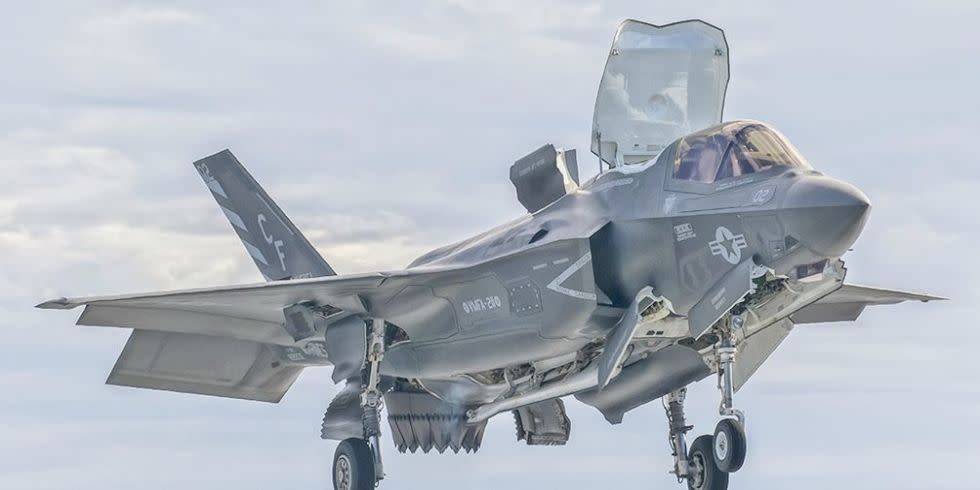The F-35 Is on Its Way to Stare Down North Korea

By the early 2020s, the United States and its allies in the Pacific plan to have more than 100 stealthy F-35 Joint Strike Fighters stationed near North Korea, according to Aviation Week. Marine Fighter Attack Squadron 121, the "Green Knights," were the first squadron of F-35s sent to the Pacific theater. They are currently deployed to Marine Corps Air Station Iwakuni in Japan, and the jets participated in training exercises in South Korea in March.
Dozens of F-35 squadrons are to follow. The Air Force is preparing to station the F-35As of the 34th Fighter Squadron out of Hill AFB, Utah, in the Pacific region in the coming months. Japan will receive 38 of its 42 planned F-35s starting this year, and F-35 deliveries to South Korea will begin next year, as the first South Korean aircraft just hit the Lockheed Martin assembly line in Fort Worth, Texas.
The stealthy F-35 Lightning II, with a top speed around Mach 1.6, is simply beyond North Korea's ability to oppose. From Aviation Week:
Without assistance from China or Russia, North Korea would stand no chance of defending against a wave of low-observable Joint Strike Fighters, which would be used to clear the air of opposing jets, hunt down rogue missiles, and protect advancing ground troops. The stealth jets would be virtually unopposed by Pyongyang's outdated inventory of former Soviet and independently developed radars and surface-to-air missiles.
North Korea had the fourth largest army in the world by active personnel, after China, India, and the United States (Russia is 5th in this ranking). But the country has been consistently slipping behind in conventional warfare technologies, such as advanced air forces and surface air defense stations, since the end of the Korean War. To compensate, Pyongyang has invested heavily in a nuclear weapons program and intercontinental ballistic missiles (ICBMs) that could deliver a nuclear warhead to a distant target.
The DPRK's air force consists primarily of dated Chinese and Soviet fighters, and North Korea maintains a variety of missiles, including modern S-200 surface-to-air missiles. The country's radar and tracking systems remain largely incapable of reliably targeting advanced fighters, however.
South Korea on the other hand, operates variants of the F-15 and F-16, as well as Northrop F-5 fighters and the T-50 advanced supersonic trainer that can be outfitted for light attack. In Japan, Mitsubishi Heavy Industries builds its own variants of the F-15 and the F-16 (known as the F-2), and the Air Self-Defense Force has already received its first F-35As.
North Korea, backed into a corner with conventional air force, continues to rely on its nuclear weapons program to threaten the coalition forces in the Pacific. North Korea has a reported 30-60 nuclear warheads and advancing ballistic missile capabilities, such as the two-stage Hwasong-14 that launched twice in July. The U.S. response is to line the country's border with F-35s and other advanced aircraft, ships, and stations-enough conventional weaponry to overwhelm North Korea.
"North Korea can't take those [F-35] aircraft on in the air. They can't take them on with surface-to-air capabilities, so it pushes them to say, 'We've got to take those aircraft on when they're on the ground,'" Bruce Bennett, a Rand Corporation expert on the Pacific theater, told Aviation Week. "That drives them to think about the use of missiles and potentially nuclear weapons or other payloads against key airfields to try to neutralize that threat. Both sides have an incentive to go first."
The reliability of military deterrence is going to be put to the test in the Pacific. Let's hope it holds.
Source: Aviation Week
You Might Also Like

